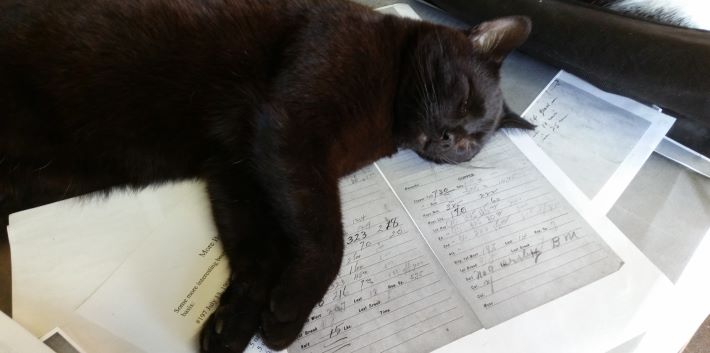I can see you-
Your brown skin shinin’ in the sun
You got that top pulled down and that radio on, baby
And I can tell you my love for you will still be strong
After the boys of summer have gone
– The Boys of Summer, Don Henley
Has it really been four weeks since I posted links here? Indeed, and it seems as if it would be easy to sort through the headlines since Nov. 6 and assemble a post of only stories about the craft beer apocalypse. I am left searching for a phrase that is the opposite of “a rising tide lifts all boats.”
Doug Veliky gets to the “what’s next” question at the end of “Recognizing Hype Cycles” (which, of course, I first read as “hop cycles” when the email arrived.) Dave Infante and Aaron Goldfarb not so much in the Taplines podcast “How Finance Bros Discovered Hazy IPAs.” Unless you think designer gummies are the answer. Anyway, I suggest reading the first and listening to the second, which provides a case study.
Obviously, the Beer Crunchers post is a business story, beginning by stating, “The key to navigating these cycles successfully begins with self-awareness and an accompanying business plan that accounts for the fact that you’re in one.” And concluding, “The number of breweries and the collective output of each will find their proper sizing in each region and at each pricing tier, with less volatility and more stable churn of customers. This is the ultimate end game for this Hype Cycle in Craft Beer.”
So what do things look like after the boys of summer are gone? Veliky writes, “Craft beer will need to reimagine the experience and rely less on beer itself to be the sole driver of consumption by focusing less on people who are into beer and more on people who enjoy good beer with ‘X’.” He follows this with photos of Treehouse’s golf course and other un-brewery-like venues.
And who, in the case of beer, are the boys of summer? Turn to Taplines and the story it references.
That many have moved on to high-end bourbon or designer gummies revealed how badly conceived or operated many small breweries are. It didn’t change the reason that so many breweries that opened since 1976 have succeeded. Is there a reason to believe any of that will change?
In “Nothing Has Been Done Before: Seeking the New in 21st-Century American Popular Music,” Robert Loss writes, “The opposite of the new is not the old, it is sameness, or anything that limits the generation of significant possibilities.” And, he argues, it’s that mediocrity that makes the new possible. Otherwise, “the new would be indistinguishable; it would not exist.”
That’s true for pale lagers, hazy IPAs, and even smoked beers.
You might also enjoy
First, the occasional reminder. Each Monday, I begin bookmarking posts I might link to here the following Monday. If Alan McLeod links to one of them the following Thursday or Boak & Bailey do the same on Saturday there is a good chance I will delete the bookmark. I expect you will already have seen them (that’s your homework). Three examples from the past week: chasing beer foam, bar pizza, and exploring Belfast. I am inclined to repeat the links here only if there is a comment I absolutely need to add.

Why not go to the Kentucky source? Perhaps it is the headline that bugs me. “Central Machine Works Resurrects Kentucky Common Beer With Help From the Smithsonian.” I don’t think resurrect is the right word to use because Leah Dienes at Apocalypse Brew Works in Louisville has been brewing the lone example of the style cited in the BJCP guidelines since 2014.
That’s Dienes’ cat snoozing on brewing logs from the beginning of the 20th century provided by Conrad Selle, co-author of “Louisville Breweries.” Kentucky Common might not have ended up in the BJCP guidelines — leading homebrewers and commercial brewers thousands of miles from Louisville to brew a type of beer they had never tasted — were it not for research by Dienes, Selle and homebrewer Dibs Harting. Credit where credit is due.
Making connections. There is a story here that combines business and culture: brewery incubators give people of color an opportunity they might not have otherwise. There is a well-worn origin story: homebrewers go pro.
There is also one about the future, and reimagining experiences. For instance, the founders of Casa Humilde “started with parties and homebrew, and they have continued to host events, bringing in their other passions with good food and music. All of this appeals to their community that, like Funkytown’s (the other brewery featured in Jeff Alworth’s post), has been overlooked by craft beer.”
An Out of Prague Pilgrimage. “If you’re ever in Prague, take the time to make the trip out to Únetice for some of the best beer on the planet and if meaty snacks with rye bread are your thing, that too.”
Field beer? “The name ‘Field Beer’ came to us because we wanted to put focus on the fields and agriculture of the regeneratively grown wheat which plays a big role in the beer.”
Beyond listicles. A couple of lists that are actually useful. A guide to happy hour deals at Portland, Oregon, breweries. The 10 best beers in Costco’s advent beer calendar.